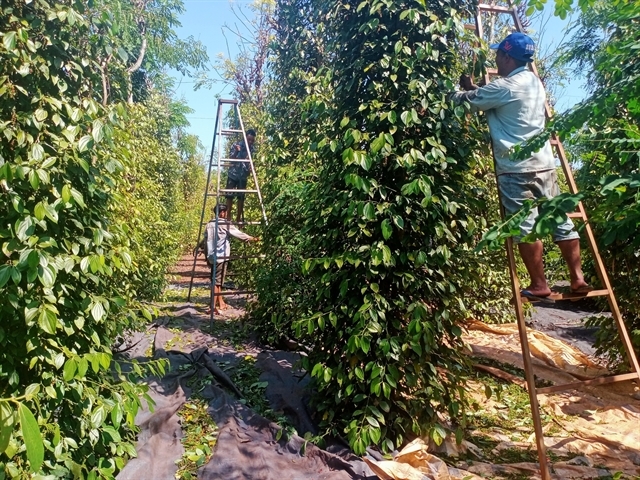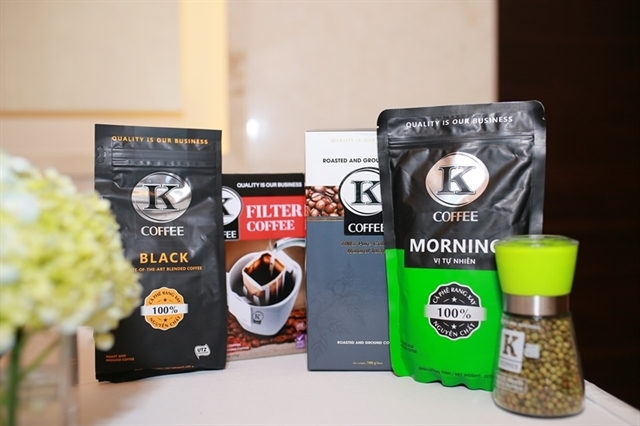Pepper industry needs to quickly shift from raw exports to deep processing
There is an urgent need to reduce raw exports and boost the proportion of deep processing to enhance added value, especially for pepper, a product with notable strengths, as agricultural exports continue to uphold their role as a key sector in Vietnam’s economy, according to experts.

Most of the pepper exported is still in raw form or has only undergone basic preliminary processing (cleaning, sorting or drying). The proportion of deeply processed pepper (grinding, mixing with spices or packaging with private labels) is still modest.
According to the Vietnam Pepper Association (VPA), deeply processed pepper products accounted for about 30% of total export value in 2023, up from 20–25% a few years ago, but still not commensurate with the potential.
The Thời báo Ngân hàng (Banking Times) quoted VPA Vice Chairman Hoang Phuoc Binh as saying that exporting raw pepper brought short-term benefits because it was easy to consume and the investment capital for processing was not large.
However, he considered this a 'quick-profit' strategy that could easily lead to a large loss of value in the supply chain.
Raw pepper is often sold at a price 20–30% cheaper than deeply processed products.
“We sell raw materials at low prices, while foreign companies process them and resell at significantly higher prices. This results in a substantial loss of added value,” he said.
Currently, global market demand is changing dramatically. Customers in the US, EU and Japan increasingly prioritise deeply processed pepper, ensuring food hygiene and safety, with certification and traceability.

Some Vietnamese enterprises have made significant investments to drive change.
Phuc Sinh Corporation, for example, operates a grinding and packaging facility that meets US and European export standards.
Companies like Olam Vietnam and Nedspice Vietnam have also established modern processing lines, exporting finely ground pepper and custom spice blends tailored to customer requirements.
Each tonne of deeply processed pepper could sell for 15–30% more than raw pepper, depending on the market, said a representative from Phuc Sinh Group.
At the same time, companies with this strategy are able to secure longer-term, more stable contracts, he said.
He added that European customers no longer buy just pepper. They expect finished products that are ground and packaged, with clear traceability.
By doing so, the firm not only commands higher prices, but also builds long-term customer loyalty, said the representative.
However, there are still not very many of these enterprises. Preliminary statistics show that less than one-third of Vietnam's total pepper exports are deeply processed products. The majority is still black and white pepper that is processed, bagged and exported in raw form.
To sell at high prices, it is necessary to produce clean products with consistent quality and transparent traceability, emphasised Binh.
Mixing pepper from many sources and then exporting it — as was often done before — is now impossible, he said.
If Vietnam doesn't transform quickly, it could lose market share to emerging competitors like Brazil and Indonesia, which are promoting investments in deep processing and semi-finished products, as well as building their own brands, he added.
A representative of the Ministry of Agriculture and Environment said that the strategy for developing Vietnam's pepper industry aims to slash raw pepper exports and lift the share of value-added, deeply-processed products to at least 50% by 2030.
This is an inevitable direction to raise export value, boost farmers’ incomes and reduce reliance on low-price competition.
VPA Chairman Nguyen Nam Hai recommended that businesses join hands with farmers to build standardised raw material areas, invest in processing and develop Vietnamese brands. Only when selling with higher added value can we truly develop sustainably.
Pepper is one of the country's key agricultural export products. Since 2001, Vietnam has risen to become the world's largest pepper exporter, currently supplying over 60% of global trading volume.
According to the General Department of Customs, pepper exports continued to grow in both volume and value in the first six months of this year.
Vietnam had exported 124,133 tonnes of pepper of all kinds by the end of last month, of which black pepper reached 105,939 tonnes and white pepper reached 18,194 tonnes.
Total export turnover reached US$850.5 million in the first six months of the year. Of this, black pepper accounted for US$704.1 million, while white pepper reached US$146.4 million.
Compared to the same period last year, export volume declined by 12.9%, but export turnover grew by 34.1%.



